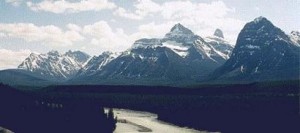United Nations University
27 January, 2002
 The degradation of mountain ecosystems — home to 600 million people and the source of water for more than half the world’s population — threatens to seriously worsen global environmental problems including floods, landslides and famine, according to an analysis by United Nations University.
The degradation of mountain ecosystems — home to 600 million people and the source of water for more than half the world’s population — threatens to seriously worsen global environmental problems including floods, landslides and famine, according to an analysis by United Nations University.
Climate change, pollution, armed conflict, population growth, deforestation and exploitative agricultural, mining and tourism practices are among a growing list of problems confronting the “water towers of the world,” prompting warnings that catastrophic flooding, landslides, avalanches, fires and famines will become more frequent and that many unique animals and plants will disappear.
While several of the world’s mountain areas are in relatively good ecological shape, many face accelerating environmental and cultural decline brought on in part by government and multilateral agency policies too often founded on inadequate research.
At the start of the U.N. International Year of Mountains 2002, the European Alps and the Himalaya-Karakorum-Hindu Kush chain (stretching from the borders of Myanmar and China across northern India, Bhutan, Nepal, Pakistan and Afghanistan) were deemed the most threatened mountain ranges in the developed and developing worlds respectively.
UNU Rector Hans van Ginkel says the International Year of Mountains is an opportunity and invitation to the scientific community to foster better, more effective aid and development policies by improving the world’s understanding of environmental and other problems facing mountain regions.
“Mountain ecosystems are essential to the well-being of the global environment. Yet there is a serious problem of widespread over-simplification of mountain-related issues and a tendency to try to solve problems that are not properly defined,” says Dr. van Ginkel. “At best, this means wasted effort and funds. At worst, it can cause even more damage to these fragile ecosystems.”
News release in full, click here
Example coverage:
Agence France Presse, click here
The Associated Press, click here
National Geographic, click here
Reuters, click here
ANSA, Italy, click here
Chicago Tribune, click here
Environment News Service, click here
Scripps Howard News Service, click here
The Age, Australia, click here
Deutsche Presse Agentur, click here
EFE, Spain, click here
Canada
The Canadian Press, click here
Toronto Star, click here
La Presse, click here
Globe and Mail, click here
CBC TV, click here

